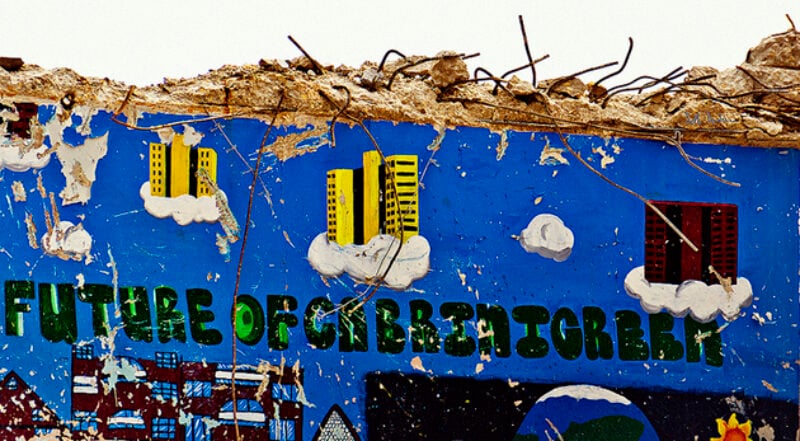Nov. 1: This post has been updated.
This week, our colleague Nikole Hannah-Jones offered an in-depth look at the many ways the U.S. government has failed to enforce the Fair Housing Act to fight segregation over the last 40 years. As Hannah-Jones reports, segregation levels have barely budged in many major metropolitan areas despite a government mandate to “affirmatively further” fair housing.
So what continues to drive housing segregation? What are the consequences? We rounded up some of the best reporting on the subject below. Did we miss any? Leave a link in the comments.
Public Housing: Government-Sponsored Segregation, The American Prospect, October 2012
Starting around the New Deal, “racially restrictive” deeds, federally-insured mortgages and little to no down payments enticed whites to the suburbs and left blacks in the projects. It kicked off decades of government policies that encouraged housing segregation. Housing authorities nationwide no longer recognize the policies, but few have done anything in terms of retribution.
The Last Tower: the Decline and Fall of Public Housing, Harper’s Magazine, May 2012
In March 2011, Chicago knocked down the last tower of Cabrini-Green, the notorious, crime-ridden public housing that had come to stand as a failed experiment in urban planning. The demolition signaled Chicago’s effort, encouraged by the Department of Housing and Urban Development, to replace the “projects” with mixed-income developments. This article follows people forced to leave Cabrini, showing how its replacements have fallen short, with tens of thousands on the waiting list for public housing and many people “replanted in unfamiliar areas no less uniformly poor and black.”
Separate, Unequal, and Ignored, The Chicago Reader, February 2011
Chicago’s severe segregation has persisted for decades – (see WBEZ’s time lapse of an end-to-end ride on the Red Line for a powerful visual representation) – but according to the Reader, mayoral candidates rarely acknowledge the issue. This piece explores why Chicago politics seem to gloss over desegregation, and highlights how one area has tackled the issue with some success – the Twin Cities in Minnesota.
Segregation: The Invisible Elephant in the Foreclosure Debate, Doug Massey and Gregory Squires, November 2010
Two top sociologists who have studied segregation for decades run through the research showing how the foreclosure crisis relates to race. Studies (as well as severalmorerecent lawsuits) have shown that African American and Latino borrowers were targeted for subprime loans, even when they could have qualified for regular loans. They’ve also shown that the rate of segregation is the single best predictor of the rate and number of foreclosures in a given metropolitan area. Also see the Washington Post’s recent piece on the lasting impacts of credit scars on black communities.
A System Divided: ‘Why Don’t We Have Any White Kids?’, New York Times, May 2012
A side-effect of housing integration failures: segregated schools. Many researchers point out that schools today are more segregated than they were in the ‘60s; this pieces takes a deep look at Explore Charter School in Brooklyn, part of a public school system where more than half the schools are at least 90 percent black and Hispanic, and the effects of segregation. A major voice in the story: students themselves.
Empty Cradles, Milwaukee Journal-Sentinel, 2011
Segregated neighborhoods often translate to pockets of alarming public health statistics. In some African-American neighborhoods in Milwaukee, babies die at a yearly rate greater than in Botswana. This series explores why there is such a racial disparity in infant mortality rates in Wisconsin, and why efforts to combat it have had limited success.
N.C. school board backed by tea party abolishes integration policy, The Washington Post, January 2011
Wake County school district in North Carolina overhauled its long-standing practice of busing students to schools outside their neighborhood to ensure socioeconomic (and racial) diversity. This article delves into the fraught politics of busing, where both sides claim they are doing what’s best for disadvantaged children (Atlantic Cities also explores Boston’s current debate on busing).
A Million-Dollar Wasteland Revealed, The Washington Post, 2011-2012
The Post’s investigation into major projects funded by HUD found hundreds of millions of wasted dollars on “stalled or abandoned projects.” Their story on the HOME program for low-income housing prompted an agency review – but even then, “discrepancies and contradictions that suggest continuing problems with the program.”
The 10 Most Segregated Urban Areas in America, Salon, March 2011
Salon rounded up the 10 most segregated cities in America, based on an index that reflects how many people from one race would have to move for even distribution across a certain area. Number 10: Los Angeles. Number one: Milwaukee.
Contributed by @jblumgart



